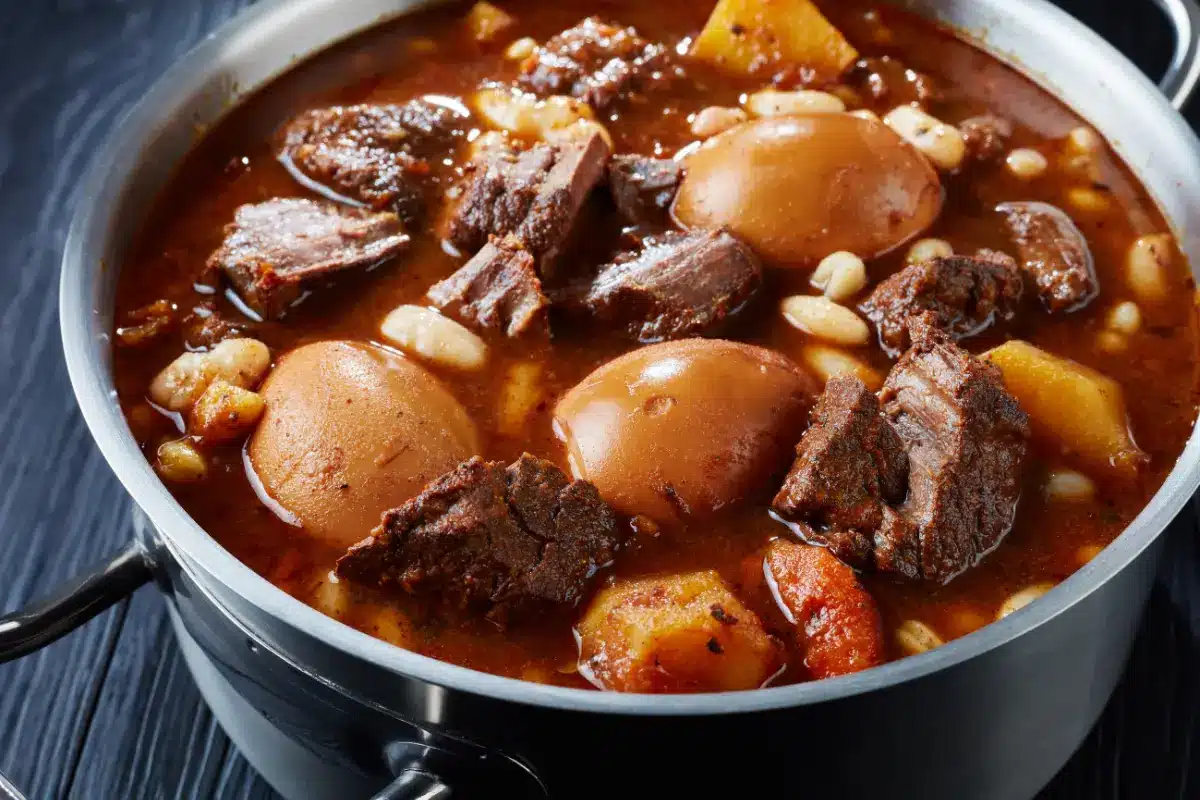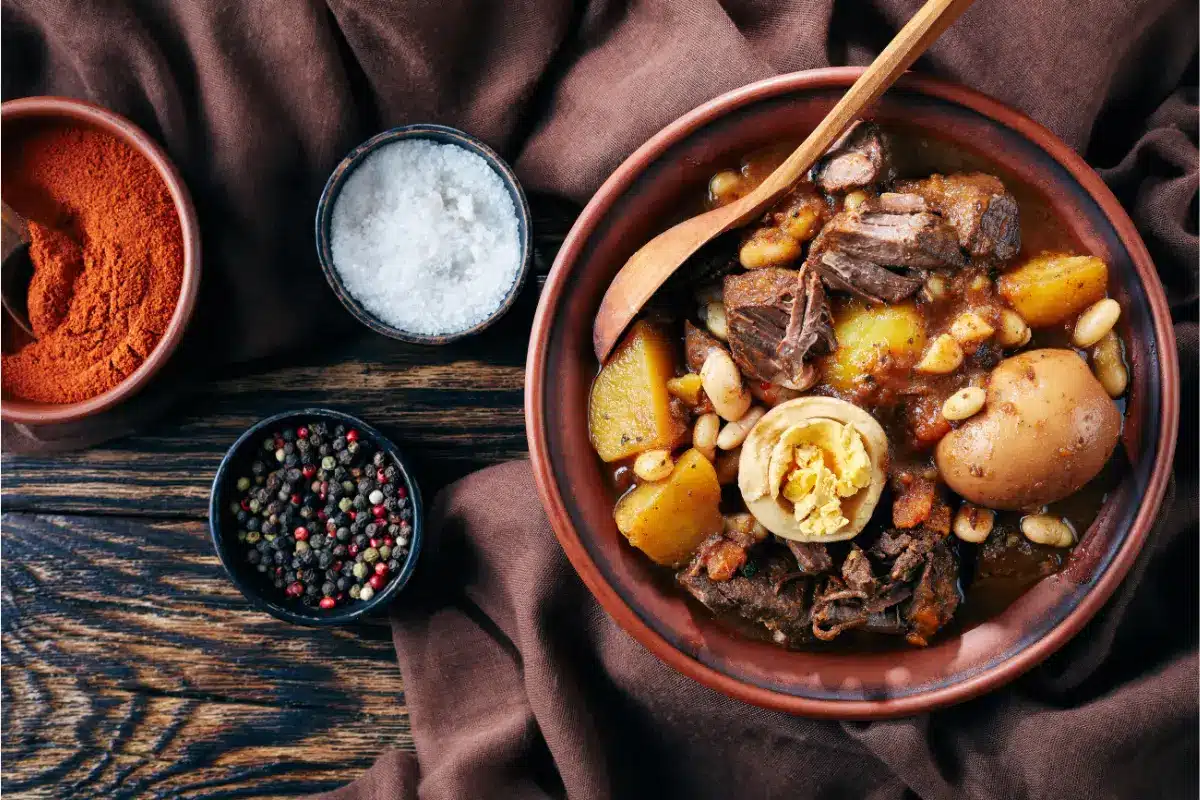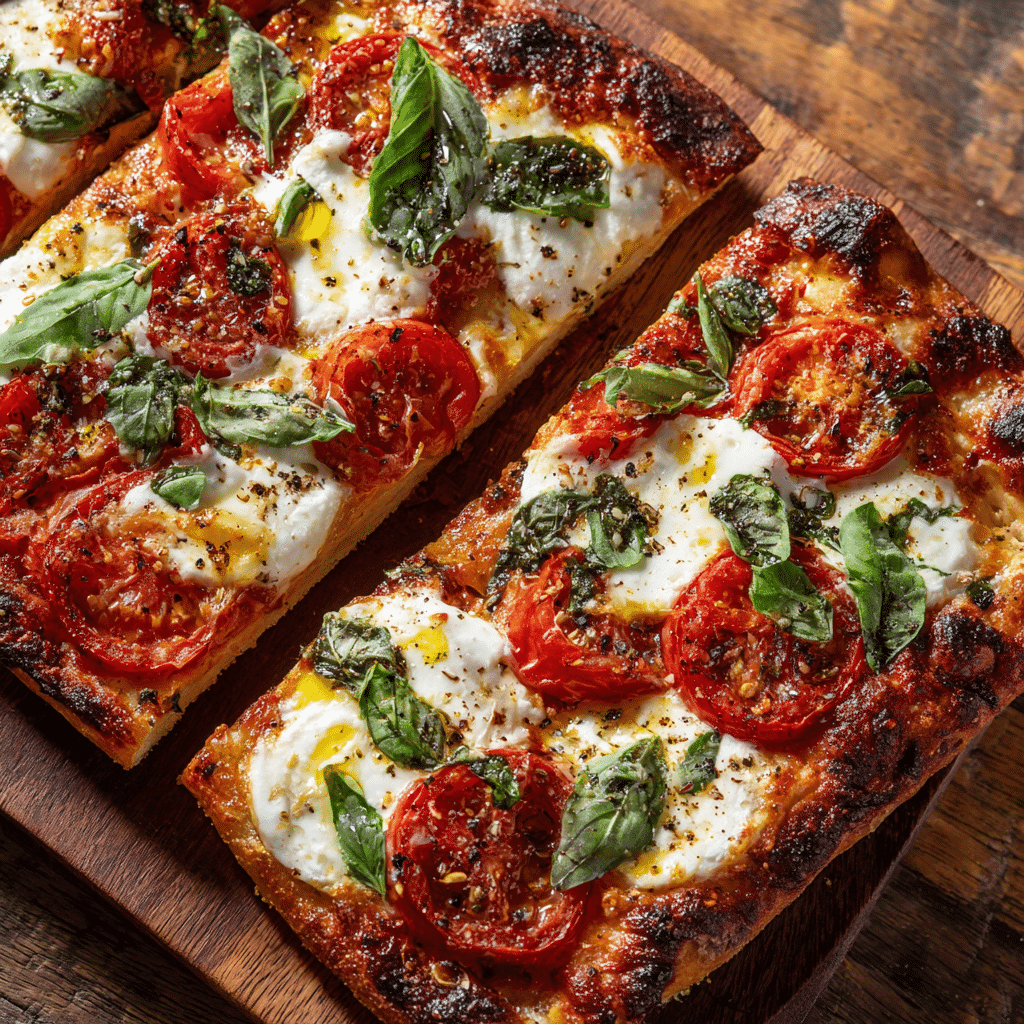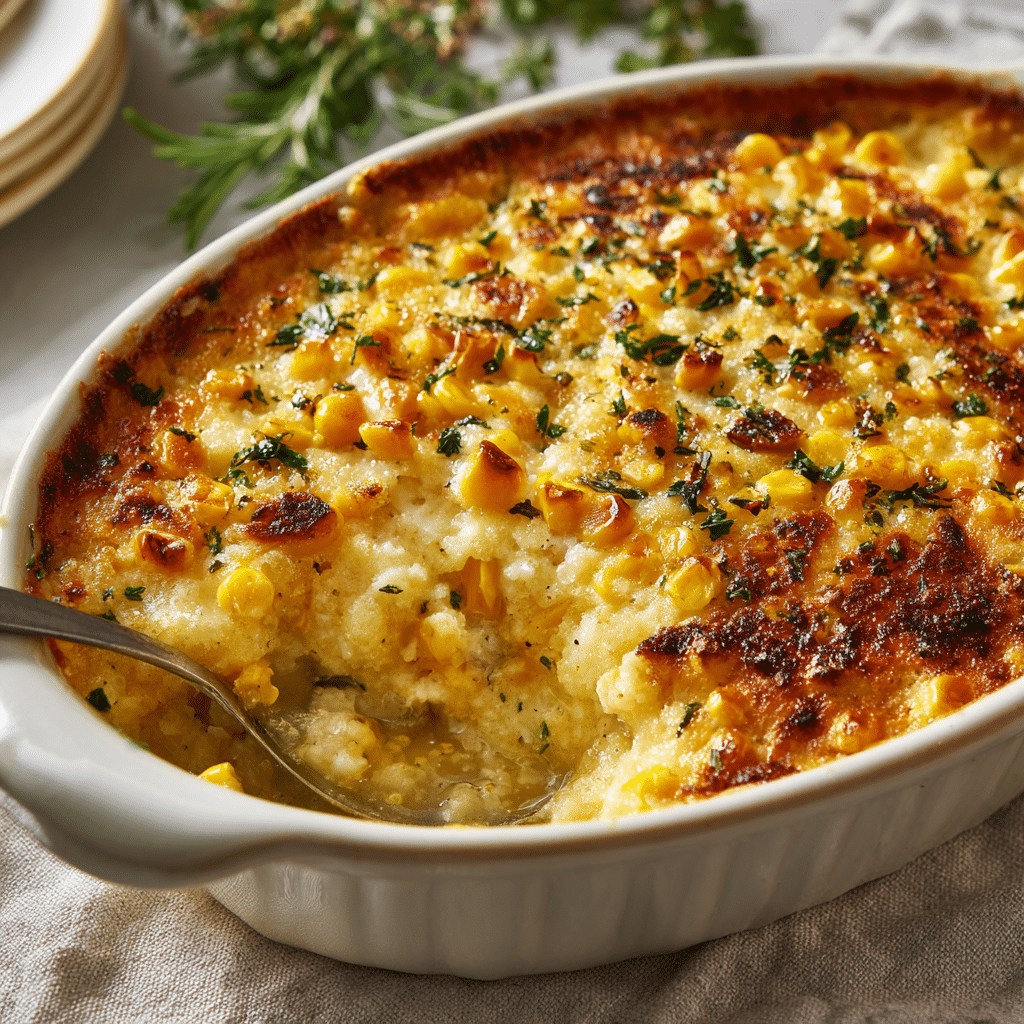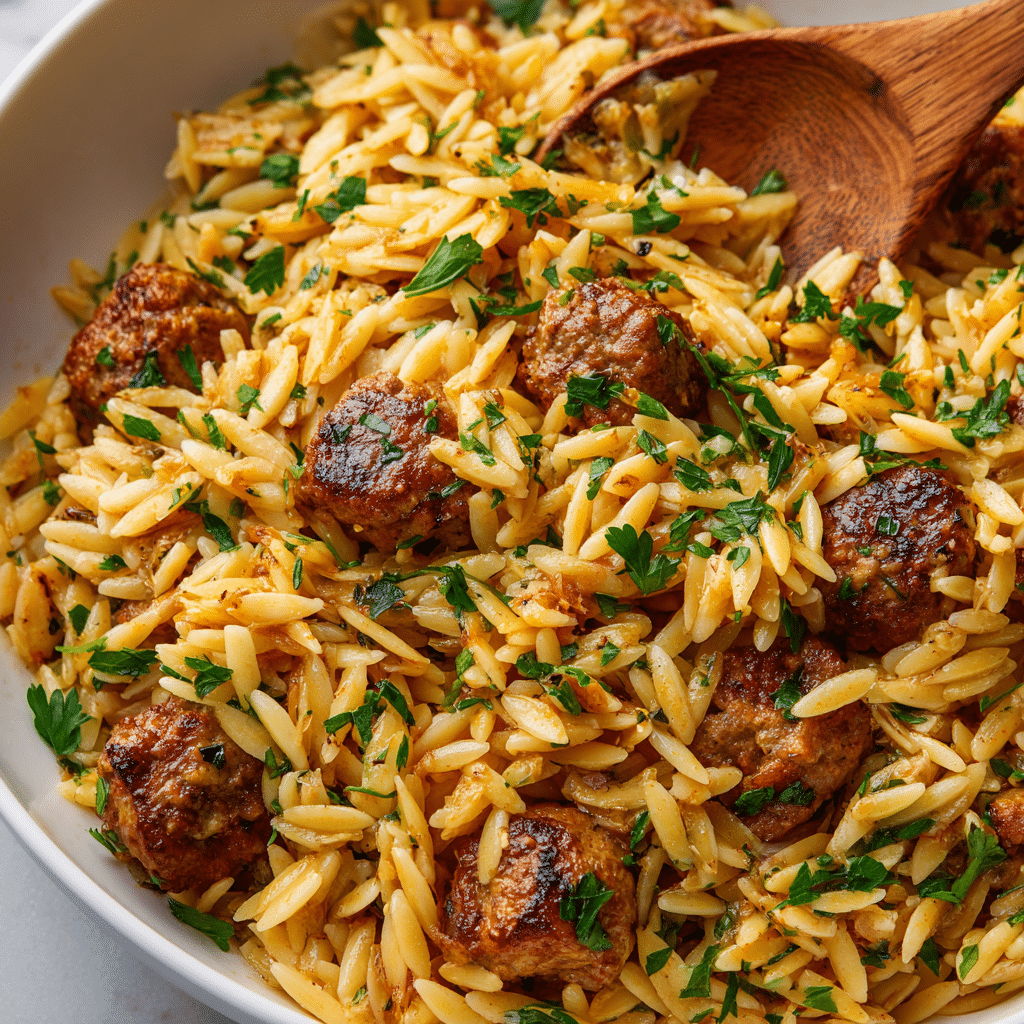In the heart of every cuisine lies a dish that tells a story of tradition, culture, and the comforting embrace of home-cooked meals. Among such revered dishes, hamine stands out as a culinary emblem of Jewish heritage, specifically cherished during the Sabbath. This article embarks on a flavorful journey, exploring the rich history, step-by-step preparation, and the intricate flavors of hamine. From the bustling kitchens of ancient times to modern-day feasts, haminé continues to be a testament to the art of slow cooking and the joy of shared meals. So, let’s dive into the world of haminé, unveiling its secrets and celebrating its place in the tapestry of Jewish culinary traditions.
Overview of hamine
Haminé, a dish steeped in history and tradition, is more than just a meal; it’s a cultural journey. Originating from the Sephardic Jews, this slow-cooked delight is traditionally prepared for the Sabbath. Why, you ask? Well, it’s because its cooking method aligns perfectly with the Sabbath laws, which prohibit cooking on this day of rest. Thus, haminé is prepared before sundown on Friday and left to cook overnight, greeting the family with its enticing aroma by lunchtime the next day.
The beauty of haminé lies not only in its rich flavors but also in its ability to bring people together, symbolizing warmth, unity, and the endurance of cultural practices through centuries. Each ingredient tells a story, each simmering hour adds depth, and every bite is a homage to generations past.
Why This Recipe Works
Now, what makes our haminé recipe a must-try? For starters, it’s a labor of love, a dish that rewards patience with unparalleled depth of flavor. Our rendition respects the traditional backbone of hamine, incorporating tender meats, hearty beans, and a symphony of spices that dance harmoniously in every spoonful.
Moreover, this recipe is a bridge between the old and the new, inviting innovation while honoring tradition. We’ve included tips for incorporating modern twists without losing the essence that makes haminé such a treasured dish. Whether you’re a seasoned chef or a curious foodie, our guide promises an engaging and rewarding cooking experience.
So, buckle up, dear readers! As we embark on this culinary voyage, prepare to be mesmerized by the history, the preparation, and the heartwarming stories that make hamine a timeless classic. Through this exploration, we not only aim to fill your stomachs but also to enrich your understanding of a dish that has been a cornerstone of Jewish culinary tradition for generations.
Part 2: Ingredients and Preparation
Ingredients List
In crafting the perfect haminé, every ingredient plays a pivotal role, merging flavors and textures into a harmonious symphony. Here’s what you’ll need:
- 1 lb dried chickpeas
- 2 lbs beef chuck, cut into large chunks
- 1 large onion, peeled and halved
- 4 cloves of garlic, minced
- 2 tablespoons olive oil
- 1 tablespoon sweet paprika
- 2 teaspoons ground cumin
- 1 teaspoon ground turmeric
- 1/2 teaspoon ground cinnamon
- Salt and pepper, to taste
- 6 large eggs
- 4 medium-sized potatoes, peeled and quartered
- 10 cups water, or as needed
Preparation Overview
First things first, let’s talk preparation. Begin by soaking the chickpeas overnight in plenty of water; this little trick is a game-changer, ensuring your chickpeas are perfectly tender. Next up, grab your beef. Opting for beef chuck adds a richness to the dish that’s hard to beat. Now, while some might shy away from using whole spices, trust me, they add a depth of flavor that ground spices just can’t match. So, let’s get everything ready to bring this dish to life.
In the world of hamine, patience is indeed a virtue. This isn’t just a recipe; it’s a ritual. As we layer our ingredients, we’re not just building flavors; we’re weaving a tapestry of culinary history, one that’s as rich and intricate as the dish itself. So, let’s roll up our sleeves and embark on this cooking adventure with the anticipation of the delicious comfort that awaits us at the journey’s end. Stay tuned, as we’ll dive into the step-by-step cooking instructions next, guiding you through each stage of this beloved dish’s creation.
Imagine a dish steeped in tradition
Step-by-Step Cooking Instructions hamine
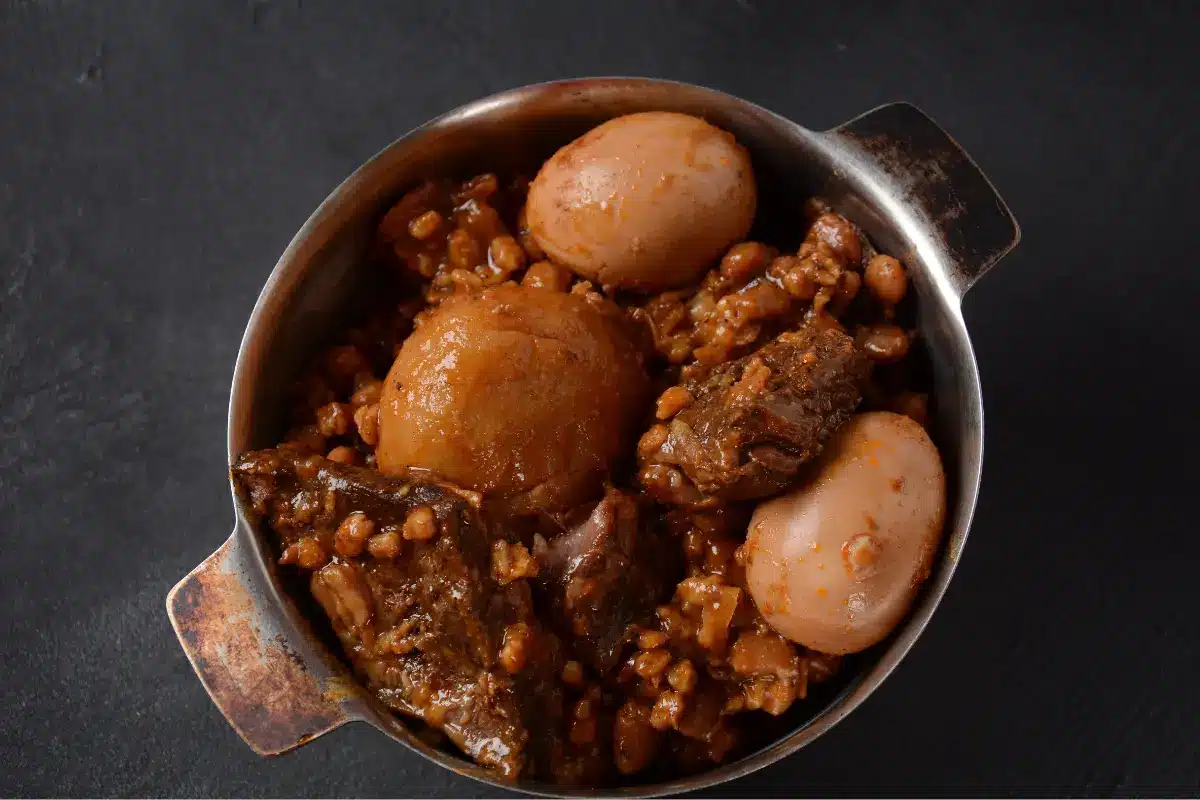
Preparation Steps.
- Begin with the Chickpeas: Drain the soaked chickpeas and set them aside. This simple step ensures they’re ready to become part of our delectable dish.
- Browning the Beef: Heat the olive oil in a large pot over medium heat. Add the beef chunks, seasoning them with a pinch of salt and pepper. Sear each piece until it’s beautifully browned on all sides. This process not only locks in the flavor but also gives the beef that irresistible caramelized exterior.
- Sauté the Aromatics: Remove the beef and in the same pot, add the onion halves, garlic, and a sprinkle of salt. Sauté until the onions are translucent and the mixture is fragrant. This foundation of flavor is crucial for a rich, deep haminé.
- Spice It Up: Return the beef to the pot. Stir in the paprika, cumin, turmeric, and cinnamon, coating the beef and onions evenly. The spices should become aromatic, a sign they’re releasing their flavors into the mix.
- The Slow Simmer: Add the chickpeas, potatoes, and enough water to cover all the ingredients. Bring to a boil, then reduce the heat to a low simmer. Tuck the eggs into the pot, ensuring they’re submerged. Cover and let it all simmer gently for several hours. This slow-cooking process is what gives hamine its signature tenderness and depth of flavor.
- Check and Stir: Periodically check on your haminé, stirring gently to ensure even cooking. Add more water if necessary, to keep everything nicely submerged.
- The Final Stretch: After about 4 hours, check if the beef is tender and the chickpeas are cooked through. Once everything is perfectly tender, remove the eggs, peel them, and add them back to the pot. Adjust the seasoning with salt and pepper to your liking.
- Serve and Savor: Ladle the haminé into bowls, making sure to get a good mix of chickpeas, beef, and potatoes in each. The egg serves as a garnish, a final touch to this exquisite dish.
Photos and Tips for Each Step
- Browning Beef: A picture capturing the golden-brown crust on the beef chunks. Tip: Don’t overcrowd the pot; browning in batches is key to a perfect sear.
- Aromatics: A photo showcasing the translucent onions and garlic. Tip: Low and slow is the mantra for drawing out those sweet, aromatic flavors.
- Adding Spices: A vibrant shot of the spices being stirred in. Tip: Toasting spices releases their oils, enhancing the dish’s aroma and flavor.
- Simmering Pot: An image of the pot simmering away. Tip: A gentle simmer, barely a bubble, is ideal for melding flavors without overcooking ingredients.
- Finished Dish: The final, hearty bowl of haminé. Tip: Letting the dish rest for a few minutes before serving allows the flavors to settle and deepen.
Embarking on this haminé recipe journey, we’ve not just cooked; we’ve connected with a tradition that spans generations, sharing in the warmth and love that this dish embodies. With each step, we’ve woven a thread into the rich tapestry of Jewish cuisine, creating a meal that’s as nourishing for the soul as it is for the body. Now, as we move forward, let’s explore the best ways to serve and pair this timeless dish, enhancing its enjoyment and celebrating its place in our culinary heritage.
Serving and Pairing Suggestions
After hours of slow cooking, our hamine is ready, filling the air with its comforting and rich aroma. But before we dive into this delicious dish, let’s talk about the best ways to serve and pair it, turning a simple meal into an extraordinary culinary experience.
Serving Suggestions
Serving haminé is about more than just dishing out a hearty meal; it’s about creating an experience that delights all senses. Here’s how to make it truly special:
- In Bowls or Platters? Serve haminé in deep bowls to keep it warm, ensuring each serving gets an even mix of chickpeas, beef, potatoes, and an egg. For a more communal vibe, consider a large platter where everyone can help themselves.
- Garnishing with Greens: A sprinkle of freshly chopped parsley or cilantro not only adds a splash of color but also introduces a fresh flavor contrast that complements the rich and savory stew.
- Bread on the Side: Offer slices of crusty bread or warm pita to sop up the delicious juices. It’s a simple addition that turns the meal into a more fulfilling experience.
Pairing Suggestions
While the haminé stands proudly on its own, pairing it with the right sides and non-alcoholic beverages can elevate the entire meal. Here are a few ideas:
- Hearty Grains for a Hearty Stew: Consider serving hamine alongside a side of fluffy couscous or bulgur wheat. These grains are not just traditional; they’re perfect for soaking up the stew’s flavorful broth.
- Fresh Salads for Balance: A crisp, fresh salad with a lemony dressing offers a refreshing counterpoint to the rich stew. Think Mediterranean flavors – cucumber, tomato, and red onion, with a generous drizzle of olive oil and lemon juice.
- Sparkling Water with a Twist: Enhance your haminé meal with glasses of sparkling water infused with fresh mint or cucumber slices. This simple, refreshing drink cleanses the palate and complements the richness of the stew without overshadowing its flavors.
Serving haminé is about embracing tradition while making it your own. Whether it’s the choice of garnish, the side dishes, or the drinks you serve alongside, each element adds a layer of texture, flavor, or refreshing contrast to the meal. Now, as we’ve explored the best ways to serve and enjoy this time-honored dish, let’s delve into its nutritional profile and the health benefits it offers, ensuring that our enjoyment of haminé is as nourishing for our bodies as it is satisfying for our taste buds.
Nutritional Information
As we savor each bite of the rich, slow-cooked hamine, it’s worth diving into the nutritional benefits this dish brings to the table. Not only is haminé a feast for the senses, but it’s also packed with ingredients that offer a myriad of health benefits. Let’s break down the nutritional content and explore how we can adjust this traditional dish to fit various dietary needs.
Health Benefits
- Chickpeas: These legumes are a powerhouse of protein and fiber, making them excellent for digestive health and maintaining a feeling of fullness. Chickpeas also provide essential vitamins and minerals, including iron, phosphorus, and B vitamins, supporting overall health and energy levels.
- Beef: A good source of high-quality protein, beef contributes to muscle maintenance and repair. It’s also rich in vital nutrients like iron, zinc, and B vitamins. Opting for lean cuts can help keep the saturated fat content in check.
- Eggs: Eggs add a boost of high-quality protein to the dish, along with vitamins D and B12, selenium, and choline. They’re also one of the few food sources of vitamin D, essential for bone health and immune function.
- Potatoes: Providing a good dose of potassium, vitamin C, and fiber (especially with the skins on), potatoes contribute to heart health and antioxidant protection.
- Spices: The spices in haminé aren’t just flavor enhancers; they’re also loaded with antioxidants. Turmeric, for example, contains curcumin, known for its anti-inflammatory and antioxidant properties.
Dietary Adjustments
- For a Lower-Fat Version: Opt for lean cuts of beef or consider using chicken for a lighter version. You can also reduce the olive oil used for sautéing.
- Gluten-Free Needs: Haminé is naturally gluten-free, making it a suitable option for those with celiac disease or gluten sensitivity. Always check the labels of any packaged ingredients to ensure they haven’t been processed with gluten-containing foods.
- Vegetarian and Vegan Variations: For a vegetarian or vegan version of hamine, omit the beef and eggs. Add more chickpeas or introduce other legumes like lentils for protein. You can also include a variety of root vegetables to enhance the dish’s flavor and nutritional profile.
By understanding the nutritional benefits of haminé and how to adjust it to meet various dietary needs, we can enjoy this traditional dish in a way that aligns with our health goals and dietary preferences. This attention to nutrition adds another layer of satisfaction to the haminé experience, making it a wholesome choice for both body and soul.
As we’ve explored the nourishing aspects of haminé, it’s clear this dish is more than just comfort food. It’s a celebration of flavor, tradition, and healthful eating. Up next, we’ll answer some frequently asked questions about haminé, shedding light on common curiosities and ensuring you’re fully equipped to bring this beloved dish to your table.
FAQs about hamine
In the journey of exploring and preparing haminé, questions often arise. It’s only natural, given the rich history and depth of this beloved dish. Here, we address some of the most frequently asked questions, providing insights that enhance your understanding and enjoyment of hamine.
What Makes Haminé Unique Among Other Stews?
Haminé boasts a distinctive slow-cooking process that tenderizes the meat and integrates the flavors deeply, setting it apart from quicker-cooking stews. Its unique combination of spices, such as turmeric and cumin, imbues the dish with a warmth and complexity that’s hard to find elsewhere. Moreover, the inclusion of whole eggs, slow-cooked within the stew, adds a traditional and textural element that enriches the experience.
Can Haminé Be Made in a Slow Cooker?
Absolutely! A slow cooker is an excellent tool for making haminé, especially if you prefer to set it and forget it. Simply follow the preparation steps, then transfer everything to your slow cooker. Cook on low for 8-10 hours or on high for 4-5 hours. The slow cooker mimics the traditional low and slow cooking method, ensuring the flavors meld beautifully.
How Can I Store and Reheat Leftover Haminé?
Haminé stores wonderfully, making it a great make-ahead meal. Cool the stew to room temperature before refrigerating it in airtight containers. It will keep for up to 3-4 days. To reheat, simply warm it over low heat on the stove, adding a little water if necessary to thin the broth. hamine can also be frozen for up to 3 months, defrosted overnight in the refrigerator, and then reheated as described.
Is Haminé Suitable for Special Diets?
Haminé, with its hearty ingredients, can be adapted to suit various dietary preferences, including gluten-free and vegetarian diets. For a vegan version, substitute the meat with additional legumes or hearty vegetables and omit the eggs. Always ensure that the spices and any additional ingredients used are aligned with your dietary requirements.
What Are the Best Sides to Serve with Haminé?
While haminé is a fulfilling dish on its own, pairing it with sides like fluffy couscous, a crisp salad, or crusty bread elevates the meal. These sides not only complement the flavors and textures of hamine but also turn the dining experience into a feast, allowing each diner to customize their plate.
Can I Prepare Haminé Ahead of Time for a Gathering?
hamine is an excellent dish for gatherings, as it can be prepared ahead of time and improves with flavor as it sits. Prepare the stew a day or two in advance, following the storage and reheating instructions mentioned earlier. This not only eases the preparation on the day of your gathering but also allows the flavors to deepen, making the haminé even more delicious.
Armed with answers to these FAQs, you’re now well-equipped to tackle the making of hamine, whether it’s your first attempt or you’re looking to refine your technique. As we wrap up this guide, let’s take a moment to reflect on the journey we’ve undertaken, from the initial preparation to these final insights, celebrating the rich tradition and communal joy that haminé brings to our tables.
